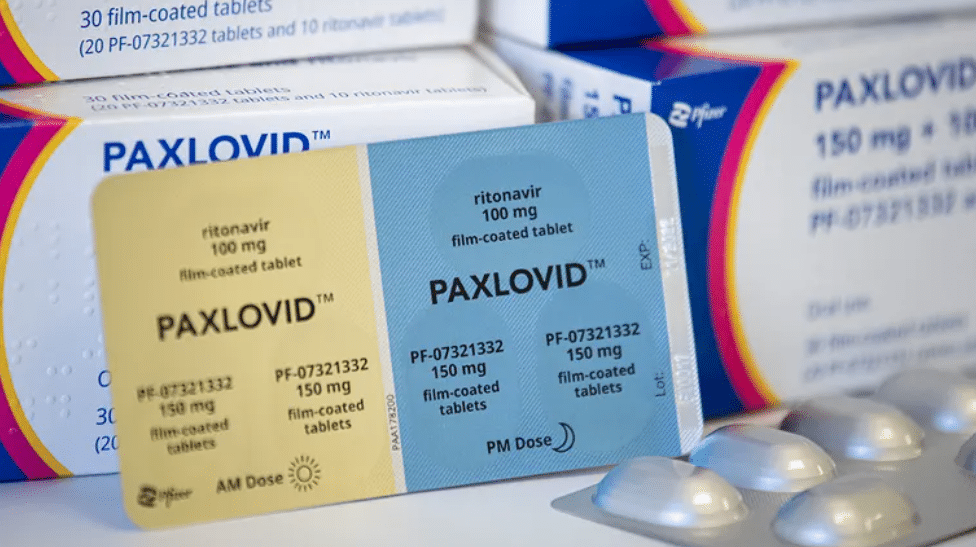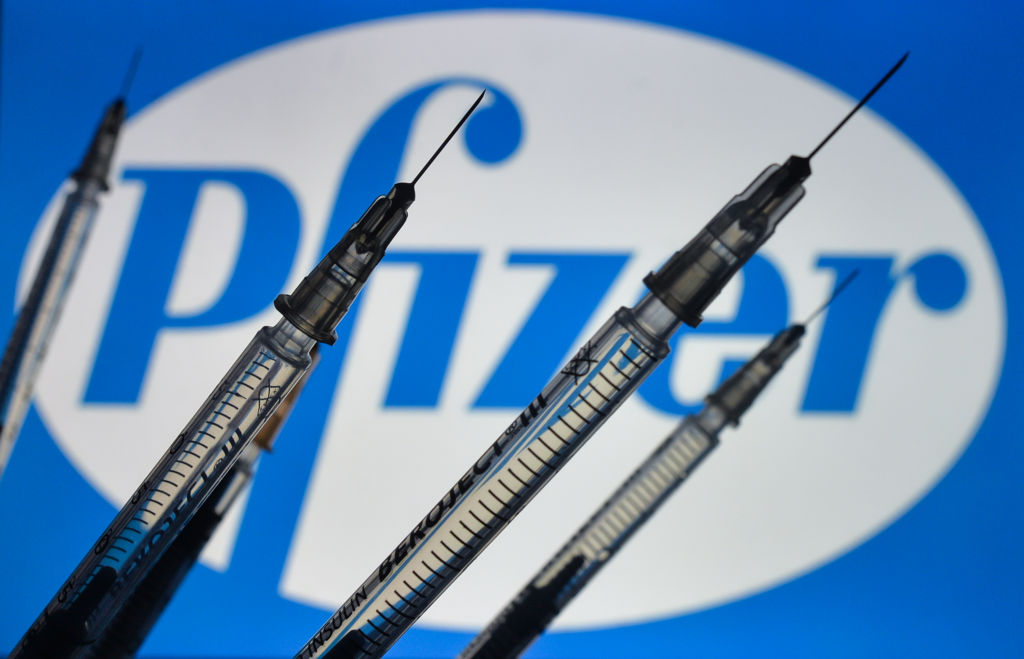What is Paxlovid? A refresher on Pfizer’s antiviral COVID-19 drug

Posted April 11, 2022 3:00 pm.
Last Updated April 11, 2022 5:58 pm.
Pfizer’s new COVID-19 treatment came with a catch when it debuted in late 2021: Supplies were limited, and it can take months to make the tablets.
In his first COVID-19 update in weeks on Monday, Ontario’s chief medical officer of health announced the province would expand eligibility for antiviral treatments and COVID-19 PCR testing amid a sixth wave of the virus.
The higher-risk groups eligible to be tested and assessed for antiviral treatments, including Paxlovid, include individuals aged 18 and over who are immunocompromised (have an immune system that is weakened by a health condition or medications), individuals aged 70 and over, those 60 and over with fewer than three vaccine doses, and people aged 18 and over with fewer than three vaccine doses and at least one risk condition.
This comes as Ontario and most of Canada navigate the sixth wave of COVID-19.
Here is a refresher of Pfizer’s antiviral treatment.
When was it approved in Canada?
Health Canada approved Pfizer’s antiviral pill treatment for COVID-19 on January 17, 2022. The treatment was greenlighted for adult patients with mild or moderate COVID-19 who are also at high risk of becoming more seriously ill.
Health Canada did not authorize it for use on teenagers or patients already hospitalized because of COVID-19.
The medication is the first oral COVID-19 treatment taken at home.
How does Paxlovid differ from a COVID-19 vaccine?
The Ontario government requires a positive COVID-19 test and said the treatments need to be administered within five days of symptoms showing. After a positive test is confirmed, individuals are asked to call their primary health care providers, Telehealth Ontario, or visit a COVID-19 clinical assessment centre.
People were also urged to have a complete list of medications on hand and disclose any other medical conditions as part of the screening.
RELATED: Explainer – How do the new COVID-19 antiviral pills work?
Paxlovid is a treatment that uses a combination of drugs to prevent the virus that causes COVID-19 from replicating once it has infected a person.
Past clinical trials showed the treatment, which helps prevent the SARS-CoV-2 virus from reproducing in an infected patient, was almost 90 per cent effective at reducing hospitalization and death in high-risk patients if given within three days of infection and 85 per cent if administered within five days.
Quick guide on Paxlovid, plus Health Canada indications and new Ontario eligibility criteria.
???? 1/6 pic.twitter.com/Guy9MDNi4q— Sabina Vohra-Miller (@SabiVM) April 11, 2022
Paxlovid supply issues and the latest updates
In January, Pfizer said they would expand production with significant gains expected in the next several months.
The company said it expected to produce 120 million courses of Paxlovid by the end of 2022, including 30 million by the end of June. But supply constraints are limiting its use everywhere, including in the U.S.
Outside those totals, Pfizer lets some generic drugmakers produce Paxlovid in a deal with the public health organization Medicines Patent Pool. That’s expected to boost supply, especially for low-income countries.
In mid-January, federal government officials said 30,400 courses of treatment were received, with approximately 120,000 more due to arrive by the end of March. Ontario was set to receive around 10,000 of the initial round of dispensing treatment courses.

An illustrative image of medical syringes was seen in front of the Pfizer logo displayed on a screen on Monday, December 28, 2020, in Dublin, Ireland. Photo courtesy: The Associated Press.
Ontario’s distribution of Paxlovid
Days after Health Canada approved Pfizer’s Paxlovid, the Ontario government released its guidelines for accessing the treatment. But hiccups in distribution remained.
On April 4, provincial government officials confirmed with CityNews that only 2.9 per cent of the Paxlovid antiviral stockpile had been dispensed to patients since it was approved.
Ontario government staff said in a statement to CityNews that around 400 people were given the drugs through provincial COVID-19 clinical assessment centres, and 755 treatment courses were sent to hospitals to treat patients in care. However, they said more than 40,000 had been received from the federal government through the end of March.
Individuals can access Ontario’s antiviral screener tool to help determine if they are at higher risk and should be assessed for treatment.
On Monday, Dr. Kieran Moore said Ontario could expand access to antiviral treatments as a regular supply of Paxlovid is expected throughout the rest of 2022.
Is it unusual for Paxlovid supplies to lag?
No. Pfizer executives say some drugs for other conditions take even longer.
The company said it has already shaved the average Paxlovid production time down to about seven months from close to nine.
The drugmaker plans to add more manufacturing and packaging sites. It will try to cut production time further, as long as it can without affecting quality.
Merck says it takes about six months to make its treatment, Molnupiravir. The company expects to reduce that to around five over time.
What happened with Merck’s antiviral COVID-19 pill?
In December 2021, Merck signed a deal to make its antiviral drug in Canada.
The drug was developed to treat mild to moderate COVID-19 illness in adults who test positive and are at risk of severe disease, including hospitalization and death.
Thermo Fisher’s site in Ontario is one of three in the world for this kind of treatment.
U.S. federal health regulators released an analysis of Merck’s experimental COVID-19 pill in November, saying it is effective against the virus but that there remain some questions about its safety.
The review flagged toxicity risks to developing fetuses and other potential problems in pregnant people after congenital disabilities were identified in studies of the pill in animals.
With files from Nick Westoll of CityNews, The Associated Press and The Canadian Press








